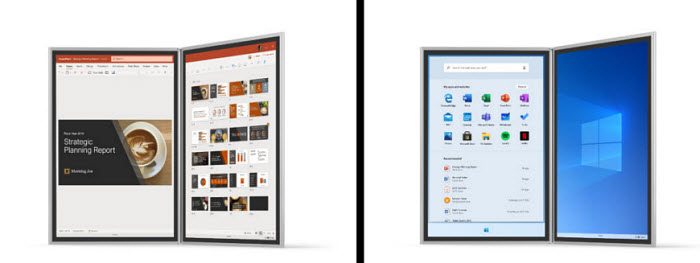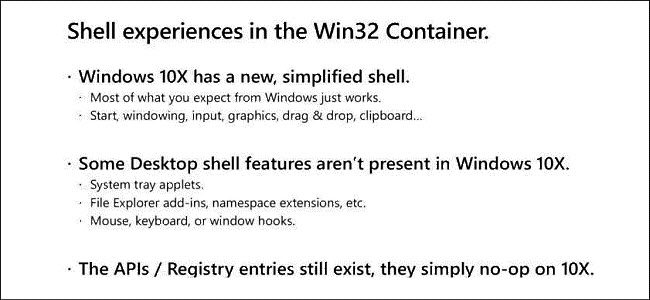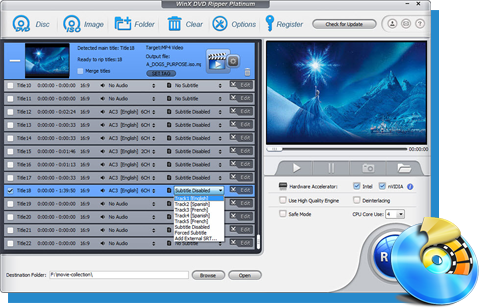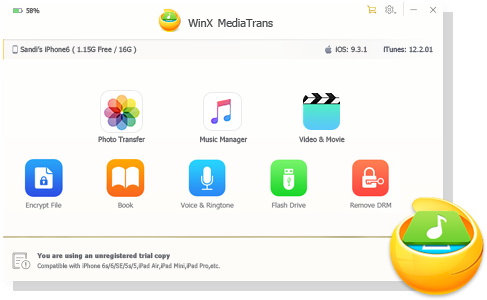Windows 10X vs Windows 10 Full Differences
Windows 10X (codenamed Windows Lite/Santorini), a new version of Windows, was announced back in 2019 and is finally launching this year. Originally designed for use on dual-screen devicesm, Windows 10X is also coming to single-screen devices. Many have asked questions like will Windows 10x replace Windows 10? How is Windows 10x different from Windows 10 (Home & Pro), should I upgrade, and more. If you want to dig more, check our Windows 10x vs 10 review below.

What is Windows 10X?
You need to know that Windows 10x is not brand new. Instead, it's a streamlined version of Windows 10 designed to be compatible with upcoming dual screen and foldable devices like Surface Neo, Lenovo ThinkPad X1 Fold, ASUS ZenBook Pro Duo, and the HP Omen X 2S. Will Windows 10X replace Windows 10 Home/Pro? The company said no. However, according to Microsoft, compared to Windows 10, Windows 10X will be simple, sleek and faster.
Windows 10x vs Windows 10: Interface
The most intuitive difference between Windows 10X and 10 is the new interface. As Windows 10x is designed for dual-screen devices while Windows 10 is for single screens, the icon placement and overall design are quite different. Unlike Windows 10, Windows 10X has the taskbar located on the left of the screen while the right side of the screen is for other tasks. Compared to Windows 10, Windows 10x’ new look feel a bit more like Chrome OS and iPadOS. Below are some detailed new design diffferences:
- Start menu - A new Start menu is added in Windows 10X, which ditches the Live Titles in Windows 10, but will display apps, recently accessed documents, and web pages.
- Task bar - A new adaptive Taskbar with new animations is here in Windows 10x. Different to Windows 10, it will show icons on the left side of the screen.
- Action center - The new Action center in Windows 10x is quite different, with more focus on quick actions.
- Flexible postures - To ensure the best experience on a laptop, tablet, different devices, Windows 10X introduces 5 different postures.
- Dynamic wallpapers - Extra visual improvements are introduced with a new feature called dynamic wallpapers.

Windows 10x vs Windows 10: APP Container
Another big difference between Windows 10X and Windows 10 is that Microsoft requires all the apps for Windows 10X run in containers. There are three types of Windows 10X containers: Win32, full-trust MSIX, and Native (UWP). MSIX and native containers already exist and Win32 containers is used to work with all Windows 10 and the legacy Win32 desktop apps on 10X without further development efforts.
This process is to isolate the apps from the operating system. So if any problem occurs, they won't cause any system crashes or issues. Therefore, Microsoft said Windows 10X is more secure than Windows 10.

Windows 10x vs 10: Faster Updates & Longer Battery Life
Since Windows 10X runs separately from apps, drivers, and other files, Windows 10X updates will be much faster than Windows 10. On Windows 10, it will download the OS update, apply it and reboot, which takes minutes even on a high-end computer. Windows 10X, instead, will install the update in a different partition and switch to it once completed. This allows Windows 10X to download and apply updates in less than 90 seconds.
Compared to Windows 10, Windows 10X will have longer battery life. The isolating strategy allows Windows 10X to "deliver non-intrusive updates and improved system resources for extended battery life." More than that, Windows 10X includes big and small cores to let typical appsrun on larger cores and lightweight apps on power-saving cores.
Windows 10x vs 10: Compatibility
On the app side, the Win32 containers are designed to get the legacy Win32 apps work on Windows 10X, though they will run in a single, secure container by default. However, there are some limits. Windows 10X won't include the Windows Shell. For example, extensions and add-ons in the File Explorer that are from third-party developers may not work on Windows 10X. Certain APIs-related system settings may also have trouble on the new OS, such as the volume controller, or temperature detector.
As for the haredware, according to Microsoft, Windows 10X will work on both Microsoft Surface and devices from several Windows ecosystem partners including ASUS, Dell, HP and Lenovo. Originally intended for dual-screen devices, Windows 10X will also come to single-screen devices.

Who Needs 10x and How to Get It on Windows 10 PC
Windows 10X won't replace Windows 10. It run in parallel to Windows 10. Windows 10 will continue to provide enhancements and improvements to the modern desktops while Windows 10X is another platform optimized to support dual-screen platforms. So unless you're considering buying a dual-screen device, you won't need Windows 10X.
Therefore, you can't update your current Windows 10 device to Windows 10X directly. The new system can't be purchased separately. It's pre-installed on new laptops and tablets specially built for it. If you want Windows 10X, you may expect the new devices from Dell and Lenovo.
However, you can still download and install Windows 10X on Windows 10 PC. While there is no universal installer for Windows 10X, it's possible to download Windows 10X ISO emulator on PC from the Microsoft Store. If your PC is capable of running Hyper-V, and has a more advnaced confi than 4 cores, 8GB RAM, 15GB drive, and dedicated graphics, you can download Windows 10X on Windows 10 Pro, Enterprise, or Education (check detailed guide on how to download Windows 10x):
- Enabled Hyper-V feature Control Panel > Programs > Programs and Features > Turn Windows Features on or off > "Hyper-V" should be selected for the Emulator installation to be successful.
- Sign up as Windows Insider, download and install the latest Visual Studio Preview and the Windows 10 SDK Insider Preview.
- Install the Microsoft Emulator and Windows 10X Emulator Image from the Microsoft Store.





















